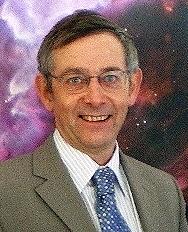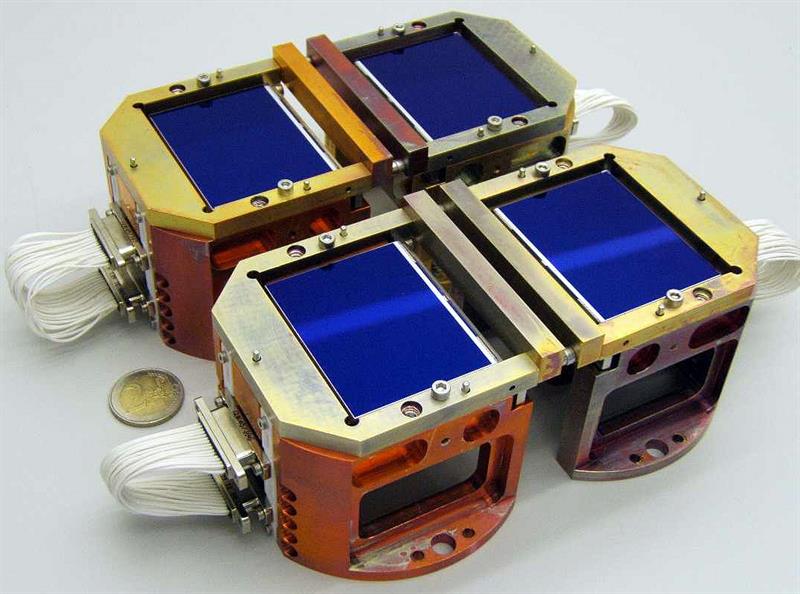“It’s not unusual for us to spend five years developing something with a space customer and then there’s a period before it gets launched,” said Dr Paul Jorden, a technical specialist with silicon imaging sensor developer Teledyne e2v.
Charlie Bloomfield, head of communication products at Airbus Space Systems, said a typical design project lasts from 12 to 48 months. Airbus Defence and Space develops electronics in an array of equipment, from simple and low cost oscillators, to highly complex and expensive digital processors.
Not only does it take several years to complete space system projects, but once in space, they are generally not serviceable. A satellite is therefore expected to function completely independently for up to 15 years.
With the speed at which technology is currently progressing, space technology is consequently a few steps behind. “Compared to ground based technology, all space technology could be seen as ‘old’,” said Bloomfield.
Both Bloomfield and Dr Jorden claim that, in the space industry, everything relies on heritage.
“A lot of the security of reliability comes from heritage – designing something brand new is much riskier. So we use ‘old’ technology but make incremental changes,” Dr Jorden added.
According to Dr Jorden, there is a constant tension between competing to develop the latest and newest to benefit from higher performance and the customer’s desire to have something that has already reached a high level of heritage and security for operation.
“Generally, I would say that maybe the first generation of a product is custom design and then each generation is an evolution of some form,” said Bloomfield.

One of the reasons e2v’s products are updated incrementally, says Dr Jorden (pictured left), is that the processing equipment in its factory is very expensive – a multi-million pound facility.
“There’s a huge investment in industries such as cell phones, so they can change their ‘kit’ more quickly. The space industry is more of a niche market, so we can only change our major facilities more slowly,” he said.
At e2v, the challenge lies not just in designing the custom-made sensors, but also in the building of customised and specific test equipment. As an example, e2v had to deliver more than 150 sensors for the Gaia satellite – the most it had commissioned. One of the challenges in delivering these sensors was that it had to extend its clean room and build more duplicate sets of test equipment with which to thermally cycle, shock and vibration, and vacuum test the various prototypes.
“Improving technology is also improving how we manage the equipment we use so we can make larger sensors,” said Dr Jorden. “One aspect of that is improving the clean rooms: the number of particles/m3 goes down and that affects your ability to build a large sensor that works well – the larger the sensor, the more prone it is to contamination.”
According to BAE Systems, updating its communications systems also proved incredibly expensive as new ground station equipment had to be built and then replicated at European Space Agency stations worldwide.
To counter this problem, the company built the Intermediate Frequency Modem System (IFMS), which is reconfigurable via software to communicate with different spacecraft on demand. This also enabled updates through firmware and software upgrades.
“This approach reduces lifecycle costs dramatically once the equipment is integrated in the ground station as complex new features can be added by software updates,” commented Nick James, radio systems team leader at BAE Systems.
IFMS was originally used to communicate with and control the movements of the Rosetta probe, whose purpose was to monitor the fast-moving Comet 67P, only 4km in diameter. Having functioned for more than 25 years and designed with a 20MHz bandwidth, its soon-to-be successor -- the Tracking, Telemetry and Command Processor – will have a 600MHz bandwidth.
Bloomfield believes that some methods and tools have been continuously re-used and customised because nothing better has yet been discovered.

“We’ve been using the same type of power converters in solid state power amplifiers (SSPAs) for years and using some of our workhorse FPGAs for generations of processing.”
Dr Jorden argues that older technology can actually work better than the new. “Everyone else wants things to be smaller, so they use 65nm CMOS technology. But for imaging, customers usually want a larger area for space applications such as star trackers, large image sensors that look at planets, or the sensors in the Hubble Space Telescope. That’s going in the opposite direction to the rest of the industry.”
(Right) One of the latest advanced gallium nitride solid state power amplifiers from Airbus.
The ‘old’ technology for space light sensors used to be charge coupled devices (CCDs) but, according to Dr Jorden, it has been overtaken by CMOS devices during the last decade.
Even though CCD and CMOS are both highly sensitive and can detect very small signals, CMOS based devices use less power, are more radiation hardy and integrate the electronics on chip, which facilitates A/D conversion.
“CMOS sensors are newer in the sense that previously the performance wasn’t so good, but in the last few years, it’s caught up with the performance of the well-established CCD sensors,” Dr Jorden explained.

However, even ‘new’ technology has ‘old’ and ‘new’ elements. “For example, 180nm was popular a few years ago and is therefore ‘old’ technology,” said Dr Jorden. “But we use that because it is ideally suited for making image sensors, while the rest of the industry – including microprocessors and components for mobile phones – uses 65nm technology, which isn’t appropriate for us. We get better performance with the older technology.”
At Airbus, Bloomsfield sees a move to sub 32nm technologies, as well as optical connectivity and processing.
(Left) A charge coupled device delivered for use on the Gaia satellite
In the space industry, therefore, ‘older’ and ‘newer’ technologies are constantly being combined. According to Bloomsfield, in the world of processing, workhorse FPGAs have been employed for generations of processing, whilst Airbus constantly upgraded and changed its mixed signal solutions and main processing functions.
Within Airbus’ SSPAs, the power converters have not changed ‘for years’, whereas the RF sections moved from GaAS to GaN FETs, which is said to have increased power 10-fold.
A different example of combining old and new is the Hubble Telescope, which unusually was serviced throughout its lifetime, the last service taking place in 2009. e2v was charged with updating its existing sensors with a higher performing replacement.
“If you have to make it backward compatible with something similar that’s already there then that does give some constraints to how much flexibility you can introduce into your design, so there can limitations in performance,” said Dr Jorden. “We weren’t free to choose where to put the connections to the instrument, for example, as it had to fit into an existing instrument with particular wiring.”
Changes in the space industry are therefore high cost and take time as reliability is crucial. Any modification is therefore not taken lightly and it is no wonder that companies prefer to implement gradual updates.













